Introduction To Thai Curries
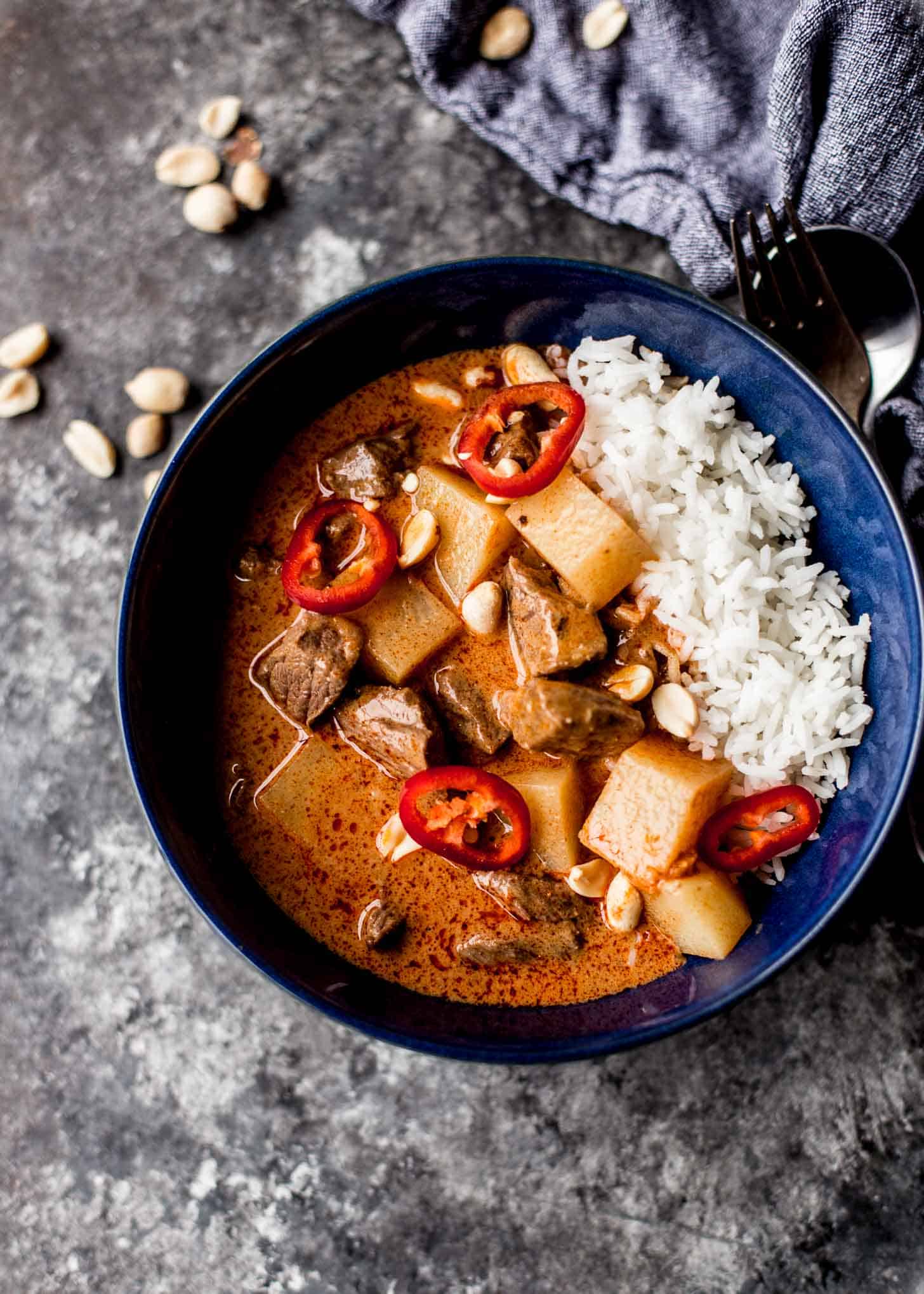
Thai Curries are a cornerstone of Thai cuisine, known for their bold flavors and aromatic spices. These savory and spicy dishes are made with a rich curry paste, which is a blend of various herbs and spices. Thai curries are characterized by their vibrant colors, with each color representing a different level of spiciness and flavor profile. The most commonly known Thai curries include Green Curry, Red Curry, Yellow Curry, Massaman Curry, and Panang Curry. Each curry offers a unique combination of ingredients and spices, making Thai curries a delightful culinary adventure.
Introduction To Thai Cuisine And Curry Dishes
Thai cuisine is renowned for its bold flavors and aromatic spices, and curry dishes are at the heart of this culinary tradition. Thai curries are made with a fragrant curry paste, which serves as the base for a variety of delicious dishes. With their vibrant colors and complex flavors, Thai curries are a feast for the senses. Each curry paste is a unique blend of herbs and spices, creating a distinct flavor profile. Whether it’s the fiery heat of a red curry or the milder sweetness of a yellow curry, Thai curries never fail to impress with their rich and satisfying taste.
Popular Ingredients In Thai Curry Pastes
Thai curry pastes are known for their bold and aromatic flavors, which are achieved by using a variety of ingredients. Some of the popular ingredients commonly found in Thai curry pastes include:
- Lemongrass: This herb adds a citrusy and refreshing flavor to the paste.
- Galangal: Similar to ginger, galangal is known for its aromatic and slightly spicy taste.
- Kaffir lime leaves: These leaves provide a distinctive citrusy and floral aroma.
- Thai basil: It adds a unique herbal note to the curry paste.
- Shrimp paste: This salty and umami ingredient adds depth and complexity to the flavor.
- Thai chilies: These fiery chilies give the curry paste its characteristic heat.
These ingredients, along with others like garlic, shallots, cilantro, and coriander roots, come together to create the vibrant and flavorful Thai curry pastes.
Green Curry

Green Curry is a popular Thai curry known for its vibrant green color and spicy yet balanced flavors. The curry paste for Green Curry is made with ingredients such as green chilies, cilantro, lime leaf, and basil, giving it a refreshing and aromatic taste. While it is spicy, Green Curry tends to be milder compared to Red Curry. It offers a harmonious combination of heat, sweetness, and acidity from the chilies, lime, and fresh herbs. Green Curry is widely enjoyed for its bold flavors and is typically served with jasmine rice or noodles.
Green Curry Ingredients And Flavor Profile
Green Curry is made with a variety of ingredients that contribute to its unique flavor profile. The key ingredients include green chilies, cilantro, lime leaf, and basil, which give the curry its vibrant color and aromatic taste. Other common ingredients include garlic, shallots, galangal, lemongrass, and shrimp paste. These ingredients are pounded together to create the rich and fragrant curry paste. When cooked, Green Curry offers a balance of spiciness, sweetness, and acidity, with the fresh herbs and lime adding a refreshing touch. It is known for its vibrant flavors and is often enjoyed with rice or noodles.
Green Curry Variations And Regional Differences
Green Curry is a versatile dish, and its variations can vary from region to region. In Central Thailand, the curry is often prepared with meat, such as chicken or pork, and is known for its spicy and aromatic flavors. In Southern Thailand, Green Curry is made with more seafood, including shrimp and fish, and has a spicier kick. In the North, the curry is milder, with the addition of ingredients like peanuts and potatoes. Each variation showcases the unique culinary traditions and tastes of the different regions, adding to the diverse and exciting world of Thai curries.
Red Curry
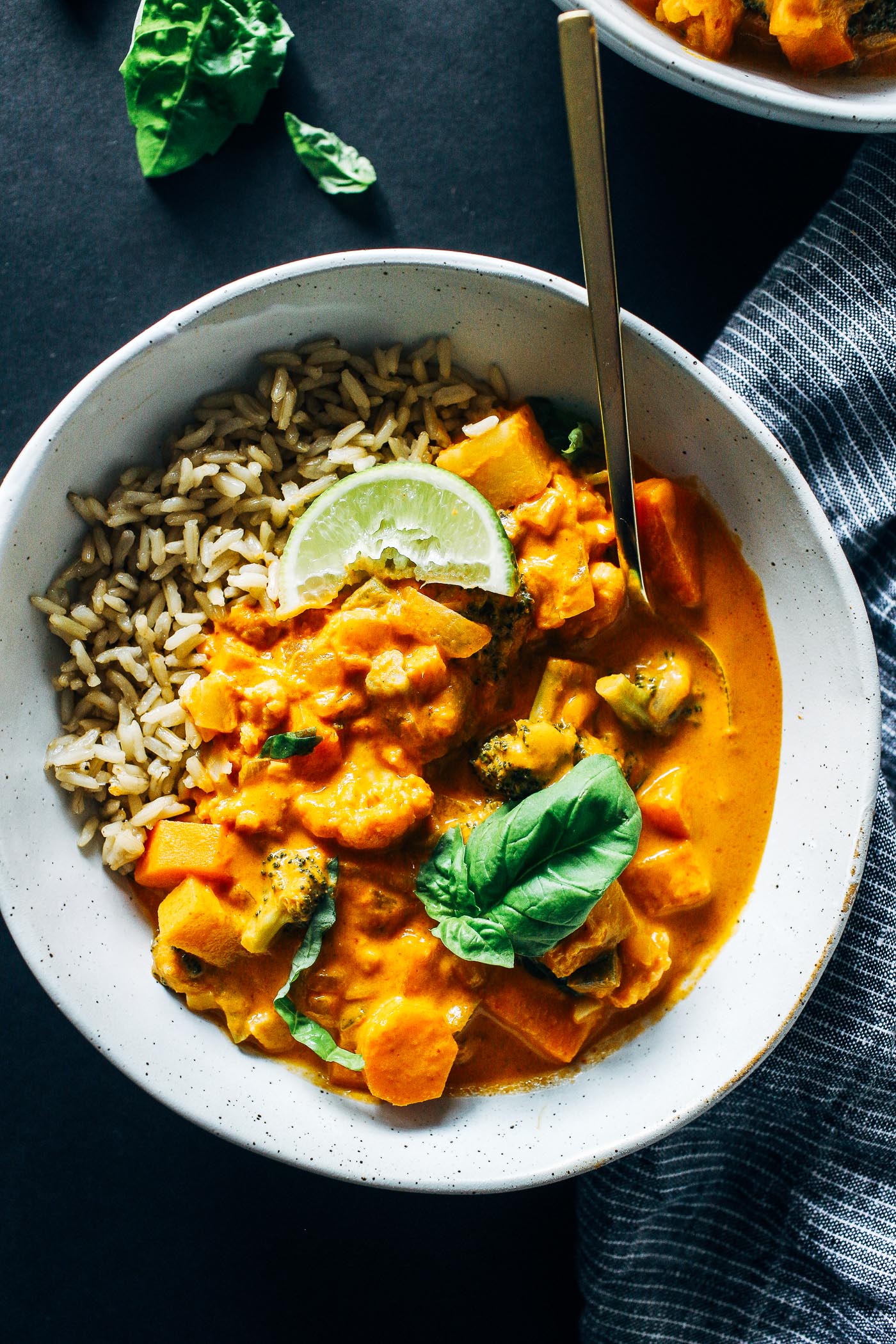
Red Curry is a popular Thai curry known for its vibrant red color and bold flavors. It gets its distinct color from the use of red chili peppers and red curry paste. The curry is typically made with a combination of meat or seafood, such as chicken, beef, shrimp, or fish, and is often cooked with vegetables like bamboo shoots, bell peppers, and Thai basil. The flavor profile of Red Curry is spicy and aromatic, with a hint of sweetness from coconut milk. It pairs well with jasmine rice and is a favorite among curry enthusiasts.
Red Curry Ingredients And Flavor Profile
Red Curry is known for its bold and spicy flavor profile. The key ingredients in Red Curry include red chili peppers, which give it its vibrant color and heat, as well as red curry paste, made from a combination of herbs and spices. Other common ingredients in Red Curry include coconut milk, garlic, shallots, lemongrass, and shrimp paste. The combination of these ingredients creates a rich and aromatic curry with a balance of spicy, sweet, and savory flavors. The curry pairs well with jasmine rice, offering a satisfying and flavorful meal.
Red Curry Spice Level And Pairing Suggestions
Red Curry is known for its bold and spicy flavor profile. The spice level of Red Curry can vary depending on the amount of red chili peppers used in the curry paste. It can range from moderately spicy to very spicy. To balance the spiciness, Red Curry is often paired with creamy and cooling ingredients such as coconut milk, which helps to mellow out the heat. Other common ingredients like bell peppers, bamboo shoots, and Thai basil add freshness and texture to the dish. Red Curry is typically served with steamed jasmine rice to complement its robust flavors.
Yellow Curry
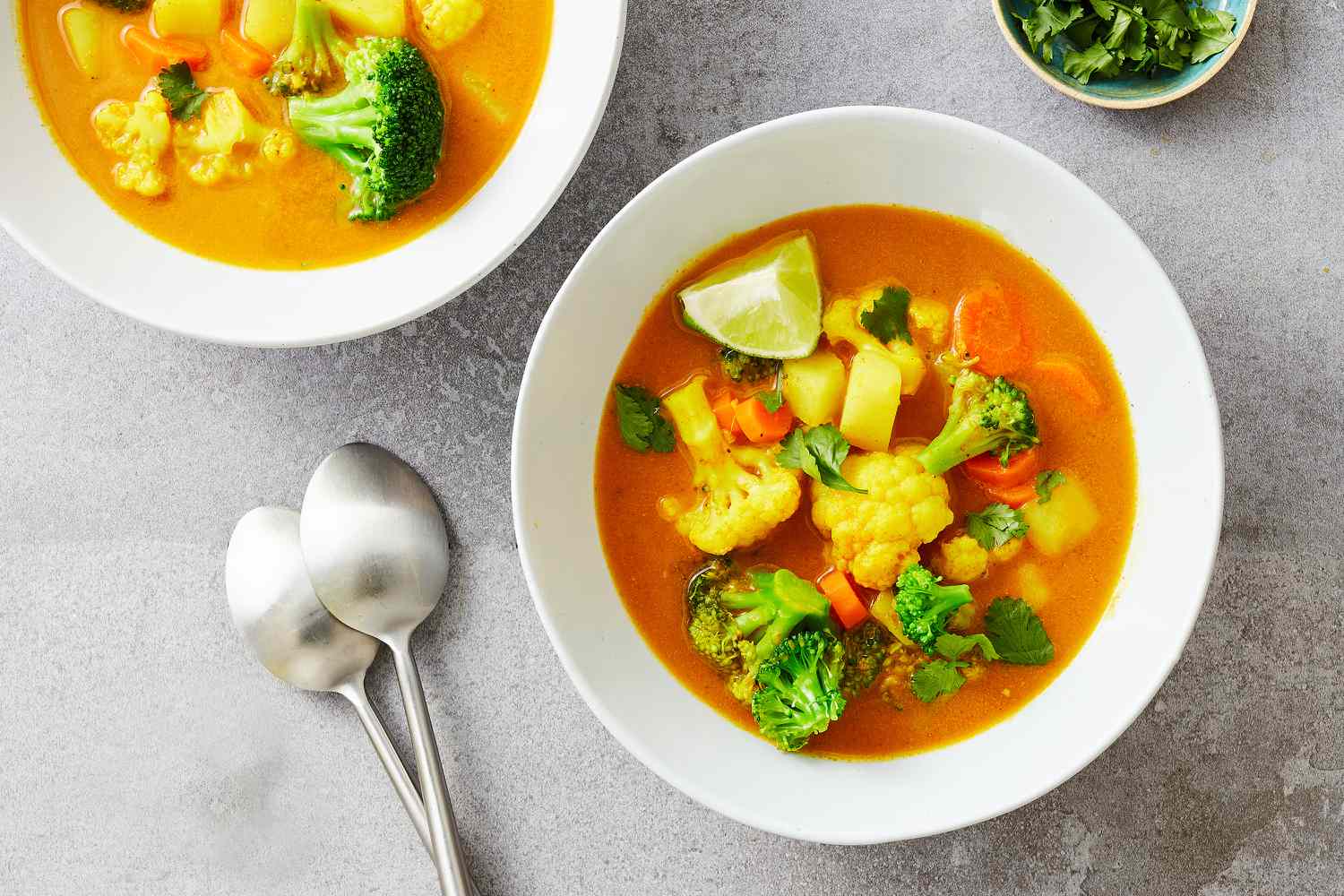
Yellow Curry is a popular Thai curry known for its vibrant color and unique flavor profile. It gets its yellow hue from turmeric, a key ingredient in the curry paste. The flavor of Yellow Curry is mild and slightly sweet with a subtle spiciness. Common ingredients found in Yellow Curry include potatoes, carrots, onions, and chicken or beef. The curry is typically served with steamed jasmine rice to balance out its rich flavors. With its mildness and sweet-savory taste, Yellow Curry is a great option for those who prefer a less spicy curry option.
Yellow Curry Ingredients And Flavor Profile
Yellow Curry is known for its vibrant color and unique flavor profile. The curry paste for Yellow Curry typically includes turmeric, which gives it its distinctive yellow hue. Other common ingredients include potatoes, carrots, onions, and a choice of protein such as chicken or beef. The flavor of Yellow Curry is mild and slightly sweet, with a subtle spiciness. It is less spicy compared to Red and Green Curries, making it a great option for those who prefer a milder curry. The mildness of Yellow Curry allows the flavors of the ingredients to shine through.
Yellow Curry Mildness And Sweet-savory Taste
Yellow Curry is known for its mildness and sweet-savory taste. Compared to Red and Green Curries, Yellow Curry has a milder level of spiciness, making it appealing to those who prefer a less fiery dish. The curry paste for Yellow Curry is made with ingredients such as turmeric, which gives it a vibrant yellow color, as well as other aromatic spices. The result is a curry that has a subtle yet distinct flavor profile, with hints of sweetness and a savory undertone. This mildness allows the other ingredients, such as potatoes and carrots, to shine through in each mouthful.
Massaman Curry
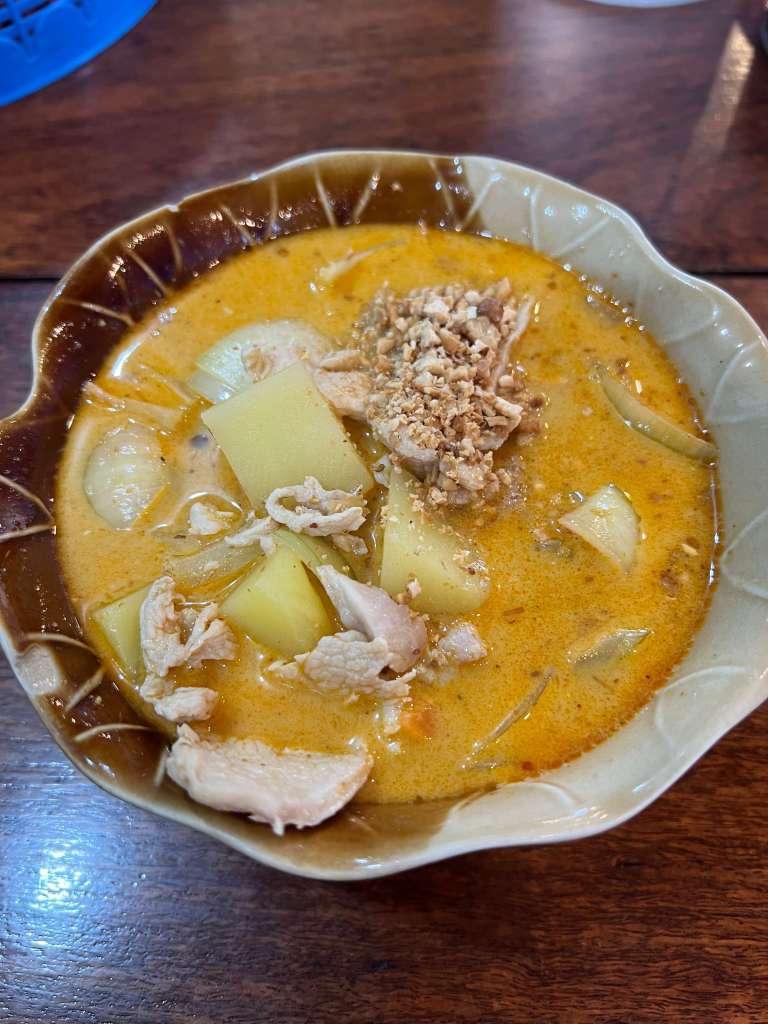
Massaman Curry is a flavorful and aromatic Thai curry that is known for its unique blend of flavors. It is made with a rich and fragrant curry paste, which typically includes ingredients such as lemongrass, galangal, and dried spices like cardamom, cinnamon, and nutmeg. Massaman Curry is often made with meat, such as beef or chicken, and is often cooked with potatoes for a hearty and filling meal. It has a slightly sweet and tangy taste, with hints of spiciness from the curry paste. Massaman Curry is a popular dish in Southern Thailand and has a rich history with cultural significance.
Massaman Curry Ingredients And Flavor Profile
Massaman Curry is made with a rich and fragrant curry paste that includes ingredients such as lemongrass, galangal, and dried spices like cardamom, cinnamon, and nutmeg. It is often cooked with meat, such as beef or chicken, and potatoes for a hearty and filling meal. Massaman Curry has a slightly sweet and tangy taste, with hints of spiciness from the curry paste. The combination of aromatic spices and creamy coconut milk gives Massaman Curry its distinct and comforting flavor. It is a popular choice for those who prefer a milder and more aromatic Thai curry.
Massaman Curry History And Cultural Significance
Massaman Curry has a rich history and cultural significance in Thailand. It is believed to have originated from the Muslim community in Southern Thailand, influenced by Persian and Indian cuisines. The name “Massaman” is derived from the Malay word for “Muslim”. The curry’s unique blend of spices and flavors represents the fusion of different culinary traditions. Massaman Curry is often associated with special occasions and festivals in Thailand, symbolizing the diversity and blending of cultures. Its popularity has spread globally, making it a beloved dish in Thai restaurants around the world.
Panang Curry
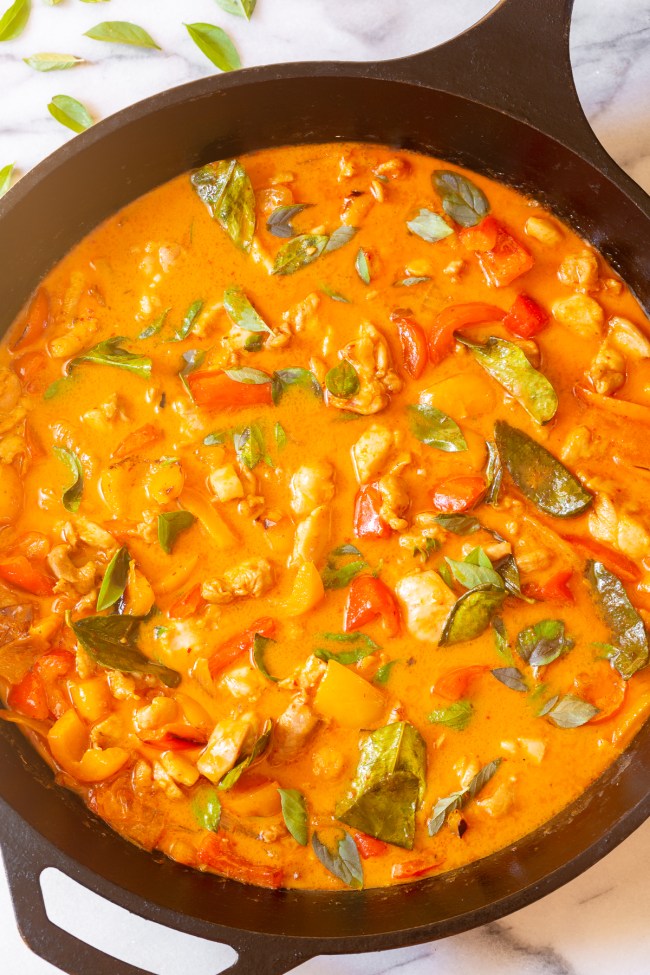
Panang Curry is a crowd-pleasing Thai curry that is loved for its rich and balanced flavors. While similar to red curry, Panang Curry is less spicy and has a sweeter taste due to the addition of peanuts. The creamy coconut milk base gives it a smooth and velvety texture. This curry is often made with a variety of vegetables, adding freshness and crunch to each bite. The combination of aromatic spices and the nutty undertones of peanuts make Panang Curry a delightful and satisfying dish for curry enthusiasts.
Panang Curry Ingredients And Flavor Profile
Panang Curry is known for its rich and balanced flavors. The key ingredients in Panang Curry include meat (such as chicken, beef, or shrimp) cooked in a delectable blend of coconut milk, Panang curry paste, makrut leaves, fish sauce, and palm sugar. The flavor profile of Panang Curry is characterized by its creamy and velvety texture, with a hint of sweetness from the palm sugar. The spiciness is milder compared to other Thai curries, allowing the aromatic spices and the nutty undertones of peanuts to shine through. The addition of Thai basil adds a fresh and savory note to this crowd-pleasing curry dish.
Panang Curry Creaminess And Nutty Undertones
Panang Curry is famous for its creamy texture and rich nutty undertones. The addition of coconut milk gives this curry a luscious and velvety consistency, making it a treat for the taste buds. The nutty flavors come from the roasted peanuts that are ground and incorporated into the curry paste. These peanuts add a unique depth of flavor and a satisfying crunch to every bite. The combination of creaminess and nuttiness in Panang Curry creates a harmonious balance of flavors that is simply irresistible. Whether enjoyed with rice or noodles, Panang Curry is sure to delight any Thai food lover.
FAQ About Types Of Thai Curry: Exploring Flavorful Options
Q: What are the most common types of Thai curry?
A: The most common types of Thai curry are Red Curry, Green Curry, Yellow Curry, Massaman Curry, and Panang Curry. Each has its own unique blend of ingredients and flavors.
Q: Are Thai curries spicy?
A: Thai curries are known for their vibrant and spicy flavors, but the level of spiciness can vary. Red Curry tends to be the spiciest, followed by Green Curry and Panang Curry. Yellow Curry and Massaman Curry are milder in comparison.
Q: What ingredients are commonly used in Thai curries?
A: Thai curries typically include ingredients such as coconut milk, curry paste, kaffir lime leaves, lemongrass, galangal, and Thai basil. Each type of curry may also contain specific ingredients like shrimp paste, peanuts, or turmeric.
Q: How can you customize the spice level of Thai curry?
A: You can adjust the spice level of Thai curry by adding more or less curry paste or fresh chilies. For a milder curry, you can also reduce the amount of spicy ingredients like chili peppers or pepper flakes.
Q: Are Thai curries gluten-free?
A: Thai curries are often gluten-free, but it’s important to check the ingredients in store-bought curry pastes and sauces as some may contain gluten-based thickeners or soy sauce. Making curry paste from scratch using gluten-free ingredients is a safe option for those with gluten sensitivities.
Q: Can Thai curries be made vegetarian or vegan?
A: Yes, Thai curries can easily be made vegetarian or vegan by using plant-based proteins like tofu, tempeh, or vegetables as substitutes for meat or seafood. Simply replace the meat with your preferred vegetarian/vegan options and adjust the cooking time accordingly.
Q: What are some traditional accompaniments for Thai curry dishes?
A: Traditional accompaniments for Thai curry dishes include steamed jasmine rice, sticky rice, or rice noodles. Garnishes like fresh cilantro, Thai basil, sliced red chili, and lime wedges are often served on the side to enhance the flavors of the curry.

Madame Thai Cuisine is not just a restaurant; it’s a culinary journey through Thailand’s vibrant and diverse flavors. Our story began with a passion for sharing the authentic tastes of Thailand with the world. Situated in the heart of [location], Madame Thai Cuisine has been a beacon of Thai culinary excellence since [year of establishment]. Our commitment to using only the finest and freshest ingredients, combined with traditional cooking techniques, has earned us a reputation as a go-to destination for exquisite Thai dining.